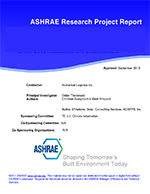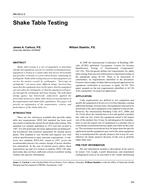Click here to purchase
Hospitals are one of the building categories in Norway which have the highest specific energy consumption. There is significant potential for optimization of the complex energy systems in hospitals by balancing the strongly varying requirements for heating and cooling as a function of time of day and time of year in different parts of the hospital. Sensitivity analysis of the thermal energy system with a focus on parameters of the ground storage system is enabled by combining different interactions between internal gains, hydronic heating, cooling, ground storage systems, and free cooling functions. In the planning of new hospitals using ground source heat pumps /chillers in combination, the number of boreholes, depth, distance between the boreholes and dimensioning of the Underground Thermal Energy Storage (UTES) is often not calculated very precisely but instead estimated by using rules of thumb. During an ongoing project, a simulation tool has been made with focus on temperature levels in the ground storage. A simulation model has been built up based on a 20,000 m2 (215200 ft2) regional hospital using a combination of the commercial building simulation tool SIMIEN and the energy analysis- and optimization tool VKB-sim. The simulations show the sensitivity of the energy system to changes in number of boreholes, borehole spacing and the dimensioning of the UTES. The paper shows the possibilities of heating the boreholes with the heat from exhaust air (coil in the exhaust air flow) to reduce the number of boreholes and/or the space between the boreholes, thus significantly decreasing the installation cost for ground storage facilities.
Citation: 2020 Winter Conference, Orlando, FL Conference Papers
Product Details
- Published:
- 2020
- Number of Pages:
- 8
- Units of Measure:
- Dual
- File Size:
- 1 file , 1 MB
- Product Code(s):
- D-OR-20-C064


